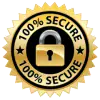Comprehensive and Detailed Step-by-Step Explanation
Context of the Scenario
The scenario highlights significant risks due to ransomware attacks and the need to strengthen the company’s Enterprise Architecture to improve data protection and resilience. TOGAF emphasizes the Architecture Compliance Review as a mechanism for ensuring the architecturemeets its objectives and addresses specific concerns such as security, resilience, and compliance with organizational goals.
The organization has already conducted a risk assessment but requires actionable steps to:
Address ransomware attack risks.
Increase the resilience of the Technology Architecture.
Ensure proper alignment with governance and compliance frameworks.
Option Analysis
Option A:
Strengths:
Highlights the need for up-to-date processes for managing changes in the Enterprise Architecture.
Recognizes the importance of governance through the Architecture Board and change management techniques.
Weaknesses:
The approach focuses solely on the Technology Architecture baseline but does not address the need for specific steps such as compliance review, gap analysis, or tailored resilience measures for ransomware risks.
It provides a broad and generic approach rather than a targeted plan for ransomware and data protection issues.
Conclusion: Incorrect. While it adheres to governance processes, it lacks specific actions to improve resilience and address the immediate security concerns.
Option B:
Strengths:
Proposes an Architecture Compliance Review, which is a core TOGAF process used to evaluate architecture implementation against defined objectives, ensuring it is fit for purpose.
Involves identifying stakeholders (departments) and tailoring checklists specific to ransomware resilience.
Emphasizes issue identification and resolution through structured review processes.
Weaknesses:
Does not explicitly address longer-term updates to the Enterprise Architecture, but this can be inferred as a next step following compliance recommendations.
Conclusion: Correct. This is the most suitable approach based on TOGAF principles, as it uses an established process to evaluate and improve the architecture's resilience.
Option C:
Strengths:
Includes monitoring for updates from suppliers to enhance detection and recovery capabilities, which is relevant to addressing ransomware risks.
Proposes a gap analysis to identify shortcomings in the current Enterprise Architecture and recommends addressing gaps through change requests.
Incorporates disaster recovery planning exercises, which are useful for testing resilience.
Weaknesses:
While thorough, the approach lacks the Architecture Compliance Review process, which is a more structured way to ensure the architecture meets resilience requirements.
Monitoring suppliers and running disaster recovery exercises are operational steps rather than strategic architectural improvements.
Conclusion: Incorrect. While it includes valid activities, it does not adhere to TOGAF’s structured approach for architecture assessment and compliance.
Option D:
Strengths:
Proposes analyzing business continuity requirements and assessing the architecture for gaps, which is relevant to the scenario.
Suggests initiating an ADM cycle to address gaps, which aligns with TOGAF principles.
Weaknesses:
Focusing on initiating a new ADM cycle may be premature, as the immediate priority is to evaluate the existing architecture and address specific resilience concerns.
Does not mention compliance review or tailored resilience measures for ransomware attacks, which are central to the scenario.
Conclusion: Incorrect. It proposes a broader approach that may not adequately address the immediate concerns highlighted by the CSO.
TOGAF References
Architecture Compliance Review: A structured process used to evaluate whether an architecture meets the stated goals, objectives, and requirements (TOGAF 9.2, Chapter 19). It is particularly useful for identifying and addressing resilience requirements in scenarios involving security risks.
Stakeholder Engagement: Identifying and involving stakeholders (e.g., departments) is a critical part of architecture governance and compliance review (TOGAF 9.2, Section 24.2).
Change Management: The Architecture Compliance Review supports identifying necessary changes, which are then managed through governance and change management processes (TOGAF 9.2, Section 21.6).
By choosing Option B, you align with TOGAF’s structured approach to compliance, resilience, and addressing security concerns.




